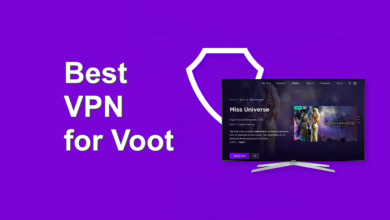10 Easy Ways to Protect Your Data Online in 2025
Data Online protection made easy. Discover 10 essential cybersecurity tips to safeguard your online privacy and prevent identity theft effectively.

Data Online protection is no longer optional it’s a necessity in today’s digital landscape. With cyber threats growing more sophisticated every year, safeguarding your personal and financial information has become crucial. Whether you’re shopping online, managing social media accounts, or handling sensitive work documents, following best practices can prevent Data Online breaches and identity theft.
In 2025, new risks will emerge, making it essential to stay ahead with the latest security measures. From strong passwords to encrypted communications, this guide covers simple yet powerful strategies to keep your information safe. By adopting these habits, you can minimize risks and browse the internet with confidence.
10 Easy Ways to Protect Your Data Online in 2025
Use Strong, Unique Passwords
One of the simplest yet most effective ways to protect your Data Online is by using strong passwords. Weak or reused passwords make it easy for hackers to access multiple accounts. A strong password should include a mix of uppercase and lowercase letters, numbers, and special characters. Consider using a password manager to generate and store complex passwords securely. These tools encrypt your credentials, reducing the risk of unauthorized access. Avoid common phrases or personal information like birthdays, which are easy to guess.
Enable Two-Factor Authentication (2FA)
Two-factor authentication (2FA) adds an extra layer of security by requiring a second verification step, such as a text message code or biometric scan. Even if a hacker obtains your password, they won’t be able to access your account without the second factor. Most major platforms, including Google, Facebook, and banking apps, offer 2FA. Enable it wherever possible to significantly reduce the chances of unauthorized access.
Keep Software and Devices Updated
Outdated software is a prime target for cybercriminals. Developers release security patches to fix vulnerabilities, so keeping your operating system, apps, and antivirus software updated is crucial. Enable automatic updates to ensure you’re always protected against the latest threats. This applies not only to computers but also to smartphones, tablets, and IoT devices.
Avoid Public Wi-Fi for Sensitive Transactions
Public Wi-Fi networks are often unsecured, making them a hotspot for data theft. If you must use public Wi-Fi, avoid accessing banking apps, emails, or sensitive accounts. Instead, use a Virtual Private Network (VPN) to encrypt your connection. A VPN masks your IP address and secures your Data Online, making it much harder for hackers to intercept.
Be Wary of Phishing Scams
Phishing attacks trick users into revealing personal information through fake emails, messages, or websites. Always verify the sender’s email address and avoid clicking on suspicious links. Look for signs of phishing, such as poor grammar, urgent requests, or unfamiliar senders. When in doubt, contact the company directly through their official website.
Use Encrypted Messaging Apps
Standard SMS and some messaging apps lack end-to-end encryption, leaving your conversations vulnerable. Switch to encrypted messaging apps like Signal or WhatsApp for private communications. These apps ensure that only you and the recipient can read the messages, protecting your data privacy.
Regularly Backup Your Data
Data Online backups protect you from ransomware attacks and hardware failures. Use cloud storage services like Google Drive or an external hard drive to store important files securely. Automate backups to ensure you never lose critical information. Having multiple backup methods (local and cloud-based) is ideal.
Review App Permissions
Many apps request unnecessary access to your contacts, camera, or location. Regularly review and revoke excessive permissions in your device settings. Only grant permissions that are essential for the app’s functionality. This minimizes the risk of Data Online misuse.
Monitor Your Online Accounts
Set Up Real-Time Alerts
Enable notifications for all Financial statement and account logins across your banking, email, and social media platforms. Most services offer customizable alert options via text or email when unfamiliar devices access your accounts or when transactions exceed set amounts. These instant warnings let you act immediately if unauthorized access occurs.
Conduct Monthly Account Audits
Schedule a recurring monthly review where you meticulously check statements, login histories, and connected devices across all critical accounts. Look for unrecognized locations, strange purchases, or unfamiliar linked apps that could indicate compromise. Many platforms provide access logs showing exact times and locations of account activity.
Use Credit Monitoring Services Proactively
Enroll in free credit monitoring through services like Credit Karma or your bank to track inquiries and new accounts opened in your name. Consider paid identity protection services that monitor dark web exposure for your personal Data Online. These services provide early warnings about potential identity theft attempts before major damage occurs.
Implement Account Freezes
Know how to temporarily freeze credit reports with all three bureaus (Experian, Equifax, TransUnion) to prevent new account openings if you suspect compromise. Many banks now offer similar “account lock” features for debit/credit cards through their mobile apps, providing an extra security layer during vulnerable periods like travel.
Educate Yourself on Cybersecurity Trends
Evolving Cybersecurity Trends
The digital threat landscape changes rapidly, with hackers constantly developing new attack methods. Subscribe to reputable cybersecurity blogs, follow industry experts on social media, and attend webinars to learn about emerging threats like AI-powered phishing or quantum computing risks. Many organizations offer free monthly threat reports that highlight current attack patterns.
Make Learning a Habit
Set aside 30 minutes each week to review cybersecurity news and updates. Enable notifications from trusted sources like CISA (Cybersecurity & Infrastructure Security Agency) or major antivirus providers. Participate in online cybersecurity communities where professionals share real-world case studies and protection strategies you can implement immediately.
Apply Knowledge
Put your learning into action by conducting personal security audits quarterly. Test your defenses by running simulated phishing tests on your email, checking your dark web exposure, and reviewing app permissions. Many cybersecurity companies offer free tools for these self-assessments, helping you identify and fix vulnerabilities before hackers exploit them.
Leverage Free Educational Resources
Take advantage of free courses from platforms like Coursera, edX, or Cybrary that offer beginner to advanced cybersecurity training. Follow interactive labs that teach hands-on skills like password management and network security. Local libraries and community centers often host free cybersecurity workshops worth attending.
Teach Others to Multiply
Share cybersecurity best practices with family, friends, and colleagues to create a more secure network around you. Organize informal “security lunch-and-learns” at work or teach older relatives how to spot scams. The more people understand threats, the harder it becomes for attackers to succeed in your circles.
Read More: Top 10 Free AI Tools in 2025 That Are Blowing Minds
Conclusion
Data Online protection in 2025 requires proactive measures, but the good news is that staying secure Data Online doesn’t have to be complicated. By implementing the strategies we’ve discussed from using strong passwords and two-factor authentication to avoiding phishing scams and securing your connections you can significantly reduce your risk of cyber threats. Remember, small, consistent actions create the strongest defense against hackers and identity theft.
As technology evolves, so do the risks, making it crucial to stay informed about the latest Data Online protection trends. Regularly updating your security practices and educating yourself on emerging threats will help you maintain a safe online presence. Start applying these tips today to ensure your personal information remains private and secure in an increasingly digital world. Your online safety is worth the effort.
FAQs
Why is Data Online protection important in 2025?
With increasing cyber threats and sophisticated hacking techniques, protecting your personal and financial information is crucial to prevent identity theft and financial losses.
How often should I change my passwords?
Experts recommend updating passwords every 3 months, especially for sensitive accounts like banking, email, and social media.
Are free VPNs safe for Data Online protection?
While convenient, many free VPNs log and sell user data. For true security, invest in a reputable paid VPN service with a no-logs policy.
What’s the most common Data Online theft method in 2025?
Phishing scams remain the top threat, with hackers using AI-generated emails and messages that appear incredibly authentic to steal login credentials.
Can biometric authentication replace passwords?
While biometrics (fingerprint/face ID) add strong security, they should be used with two-factor authentication as biometric data can sometimes be spoofed or hacked.











